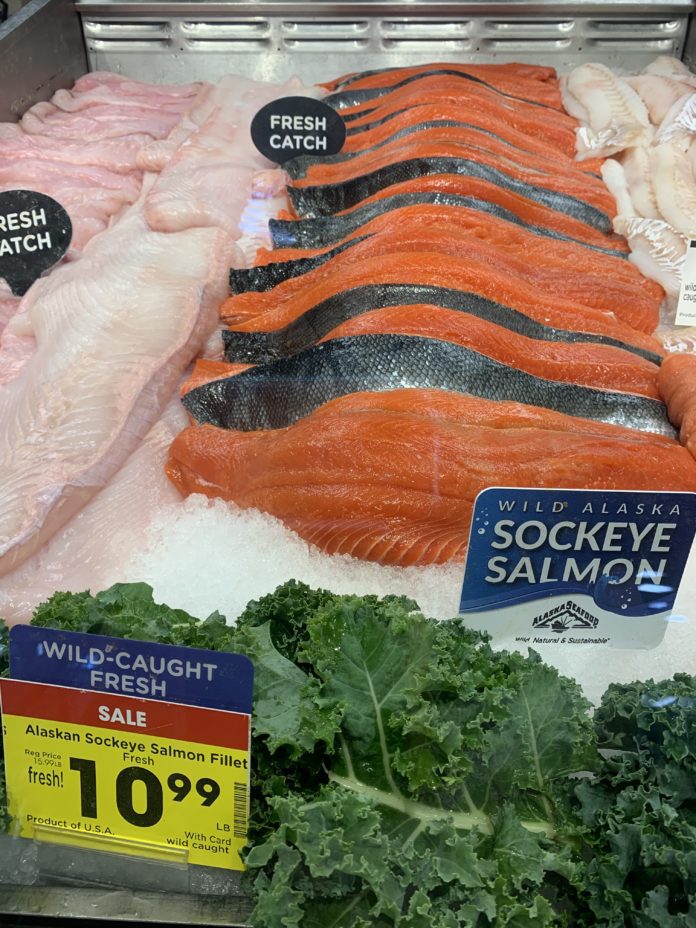
Timing is critical as seafood processors need to obtain financing for the 2024 season
Alaska legislators are asking the U.S. Department of Agriculture (USDA) to act expeditiously on an Alaska Seafood Marketing Institute (ASMI) request to purchase more wild Alaska salmon products.
“It’s a timing request to purchase more Alaska seafood through USDA Section 32, a program to support prices of commodities in surplus by purchasing them in the marketplace and distributing them to fill domestic needs,” said Bruce Schactler, the food aid program and development director for ASMI.
These purchases are badly needed to help stabilize market conditions and decrease inventories prior to the 2024 fishing season, legislators told Agriculture Secretary Tom Vilsack in a letter on Jan. 26.
“Timing is critical as seafood processors will soon be attempting to obtain financing for the 2024 pack,” they wrote in the letter. “USDA purchases are critical in helping to support market prices, which are the linchpin of the entire U.S. seafood supply chain. Your purchases not only benefit American consumers, but our seafood industry, which provides more direct jobs than any other industry in our state.”
Schactler — who put in ASMI’s request for USDA to purchase more seafood harvested in Alaska in October — agreed “it’s a timing thing.”
“It took them six months last year,” he said. “Section 32 is to help balance supply and demand, increase domestic consumption and help people who need food. We always would like them to buy more.”
The focus of this request to Vilsack is on purchasing fillets of sockeye, keta and pink salmon and canned pinks, Schactler said.
“Once they decide to go into action, they figure out how much they are going to buy, where it is going to go and when and they put out a competitive bid,” he said.
Twenty-six members of the Alaska House of Representatives and all 20 members of the Alaska Senate signed on to the letter to Vilsack, saying these purchases are invaluable in supporting Alaska fishermen, processors and coastal communities trying to navigate through very unfavorable global marketing conditions. They noted that Russian sourced fish reprocessed in China has flooded domestic markets at low prices.
While the recent U.S. Executive Order 14068 banning import of seafood caught in Russia or elsewhere by Russian fishermen is set to go into effect in mid-February, seafood processors have been forced to sell into the depressed market to further avoid expensive holding costs. This is having an adverse ripple effect back to Alaska fishermen, processors and fishing communities and causing constriction of the overall industry, legislators said.
Along with following through on U.S. seafood purchase commitments, as soon as possible is the most direct and timely way to support the Alaska seafood industry in these challenging times, legislators said. They also are seeking additional measures at USDA that could serve to support the seafood industry.
The legislators noted that seafood is currently not integrated into many USDA policies or programs designed to ensure domestic food security, supply chain integrity and support for domestic harvesting and processing businesses, at the same level as terrestrial sources of protein.
They urged Vilsack’s leadership in integrating U.S. seafood production into national food policy strategies and all USDA programs designed to support America’s food production.
This story originally ran in the Feb. 9 issue of The Cordova Times.














